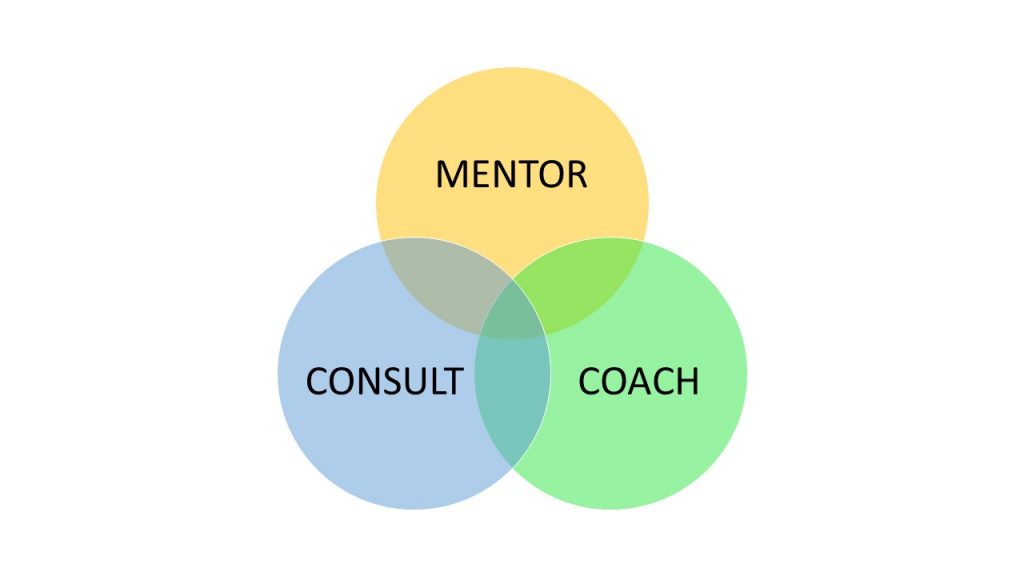I recently saw the question, are you a coach or consultant? I thought about it and realized, I couldn’t answer that question definitively, and even added a third area of being a mentor. To successfully support my clients, I must be able to wear several hats based on the client’s needs and how to best serve them. I don’t know what the need is until I conduct an intake interview to assess 1. what they want, and 2. their scope of understanding. Some just want the task done, others want to understand the process. With that information, I align my scope of expertise and how they need to receive that information. It may use coaching, consulting, or a mentor model but most often it is a hybrid of all three. Let me explain how it works in the unique nonprofit sector.
As a Consultant. This hat requires a cut and dry approach with me delivering training, facilitating a process, or completing a project. It has a very specific focus, and the client is not engaged to learn the ‘why’ or gain an understanding of the process. The perfect example is filing paperwork to get 501c3 approval. They really don’t need to know ‘how’ to file, they just want the results. Consulting certainly has its purpose, but to serve my clients at the highest level, which I always try to deliver, I use it sparingly.
As a Coach. This role requires me to partner with my clients to help them expand their awareness, gain clarity about what they want to achieve (future vision), identify the obstacles they might encounter, and create strategies to build solid processes. This often overlaps in my role as a consultant, and using the filing example, there are certain legal compliance issues they need to beware of. In addition, many come with little understanding of ‘building’ a for-purpose business, so some key elements need to be explained.
As a Mentor. This hat for me is the most rewarding as I teach and share my experience. Clients gain deeper insight and learn from my experiences, good and bad, to reach their desired goals. Hopefully, I help them refine and expand their thinking, cultivate their instincts, and build their leadership capacity. My goal is for them to reach their full potential, personally and for the organizations. Mentoring and coaching are the main strategies especially when there is a knowledge gap.
In all my roles, I do not tell, but rather ask questions that stimulate thought to enable others to develop their own path. I ask, why are you doing this – the vision; what impact do you want to have – the problem; who do you want to serve – the audience; and how will you accomplish it – the programs. As we navigate through these questions, they strengthen their visions and strategies and are far more likely to implement and sustain them—and get the results they are hoping for.

